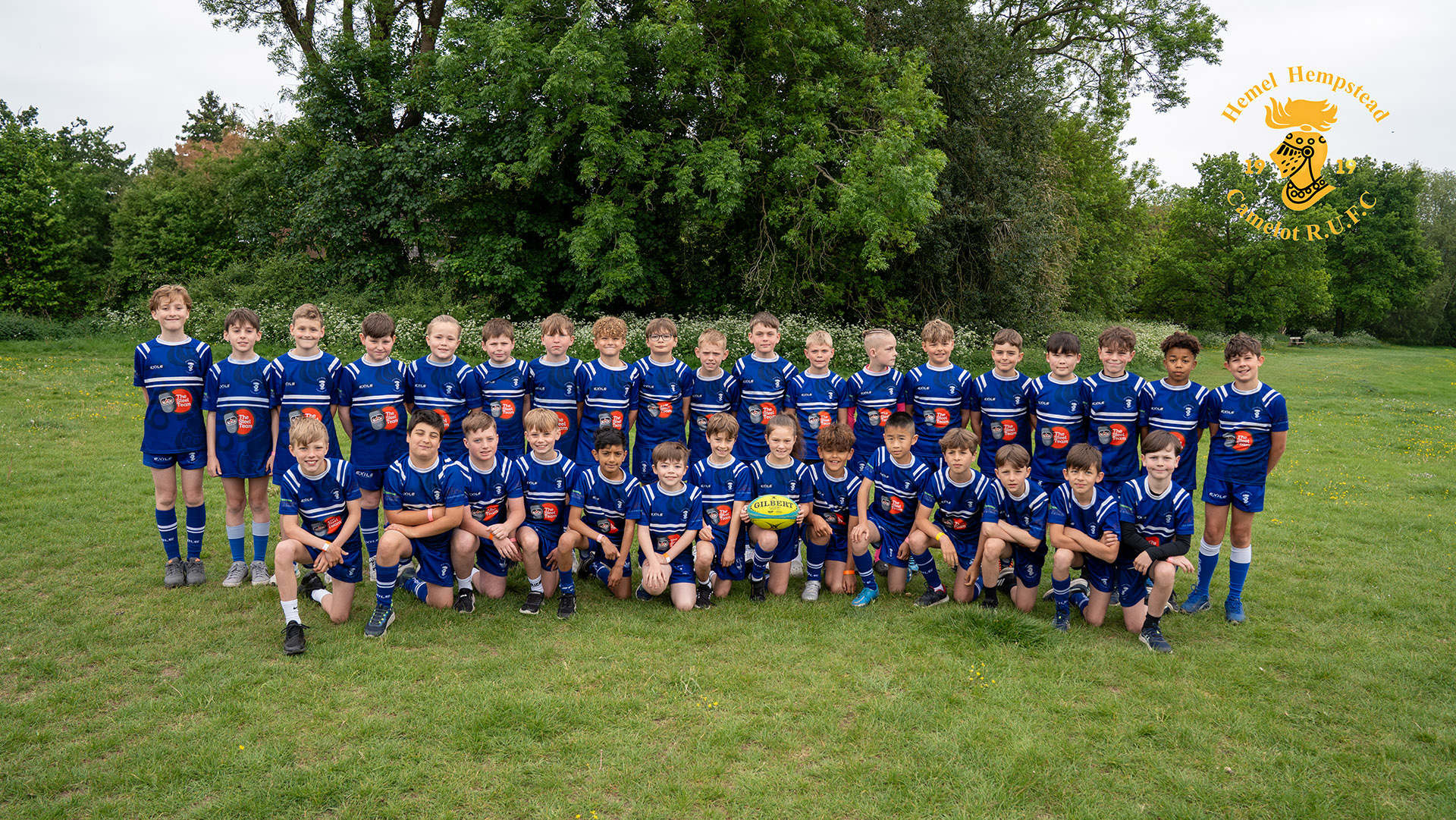
Camelot U11 (School Year 6)
Our goal is to ignite a passion for rugby in your children by creating a fun and engaging environment. We value every child equally and ensure they all fall in love with the game. Alongside our exciting regular training sessions, we participate in matches and tournaments against other clubs.
Want to give it a TRY? Bring your young player for a free session on a Friday evening or Sunday morning!
Join a vibrant and friendly group dedicated to the joy of rugby and the thrill of learning new skills. We meet every Sunday and train every Friday during the season, either at Camelot or at other clubs for festivals and joint training sessions. Rugby is fantastic for young people, helping to build their fitness, resilience, teamwork, and discipline.
All new players are welcome—no experience needed! For more information, please contact us.
Our Squad Ethos
Promote enjoyment of rugby to all U11s of whatever ability, seeking to improve technical skills and performance at every level.
Our Goals for the Season
To play to the best of our abilities, to improve our individual & teamwork skills but most of all, to have fun!
Under 11's Junior Development Pathway
Age Group: Under 11’s
LTAD Stage: Learn to Train
Train/ Match: 70:30
Window of Optimal Trainability (Focus of athletic training)
- SKILLS. Learn fundamental Rugby skills, continue with ABCs.
- SPEED & Endurance
- STRENGTH – Only using body weight
Overall Coaching Approach
Focus on learning new skills, use various games.
Keep it concise & positive (SPF)
Coach through questions / make them think!
Keep them active (Max 30 seconds listening time only)
Concentrate on Skills development, especially newly introduced skills. (Safety)
CREATIVE Team work. Players play what is in front of them. Create time!
Player Capacities
(Consolidate and develop previous age skills)
Consolidate & Develop Individual skills / Intro to new skills / cont. Develop tackling (Key element / safety)
Evasion
- Swerve and dodge / avoid contact
- Side step off both feet
- Always go forward at space
Handling skills
- Lateral Pass – both hands 8+ meters
- Catching (two hands) off the chest
- Pick & Pass and Sweep Pass
- Decision making (2v1 & 3v2)
- Decision making – creating space, switch pass, loop pass and miss pass.
- Defensive lines
Contact Skills (3rd year of tackling – But still important to focus on perfecting skills – SAFETY)
- Fine tune tackling skills (Front, side & behind) – SAFELY /
- Falling and placing the ball long and jack knife presentations
- Pop up pass from ground.
- Offload out of the tackle. (push ball beyond the defender)
- Getting back to your feet – re-join game – Bounce
Maul *(slight priority over Ruck, as players less likely to be taken to ground by initial tackle at this age)
- Micro – (3-6 players only).
- Ball carrier – Stability & Ball presentation low and in two hands.
- Link Player – Body position (Tower of power), set height equal to a scrum. secure and deliver ball.
- Defender – secure ball & player by wrapping ball carrier’s arms and ball. Leg drive.
Ruck
- Micro – (6 players only).
- Ball carrier – to ground, then present or pass ball immediately.
- Support player – secure ball or ruck over. (Tower of power),
- Tackler – release, regain feet & contest with leg drive.
Scrum
- 3 nearest players (all should participate, subject to safety)
- Tower of power
- Player in the Hooker position may strike / NO PUSH
Backline attack
- Identify and attack space. Using patterns like switch pass, loop pass and miss pass
- Re-alignment (attack and defence)
- Recognise and be able to realign on turnover or loss of possession
Kicking & Catching
- Punt, Grubber, Chip. Catching of high ball (Adjust body position) – No fly-hack
Laws / Ethics
- The tackle situation
- Concept of sporting conduct and Perspective on sport.
The GAME
- Play full tackle games (all abilities)
Principles (Team play)
- Possession – work as unit to source possession
- Continuity – maintain possession / Communication (encourage verbal skills)
- Decision making – allow them to explore various game scenarios and their outcomes
- Vision – Create/be aware of space and how to use it.
- Formation – Different types of attack / defence formations based on what player sees
- Agility
- Awareness of body space
- Balance – Static & dynamic
- Co-ordination and manipulation
- Speed, Power & Endurance (Intro – Triple extension)
- Warm-up and cool down
- Development of Self-image
- Social confidence – Response to positive reinforcement
- Enthusiasm & Commitment
- Communication skills and creative thinking
- Work as part of a team……but look to identify positive role models.
Law Variations- Under 8’s
Players per side: 9
Max pitch size: 60 x 43
Minutes per half: 20
Max game time per day: 70
Additional variations: 70
Coaching tips: Referee & coach with more intervention, especially around recently introduced elements (Safety).

